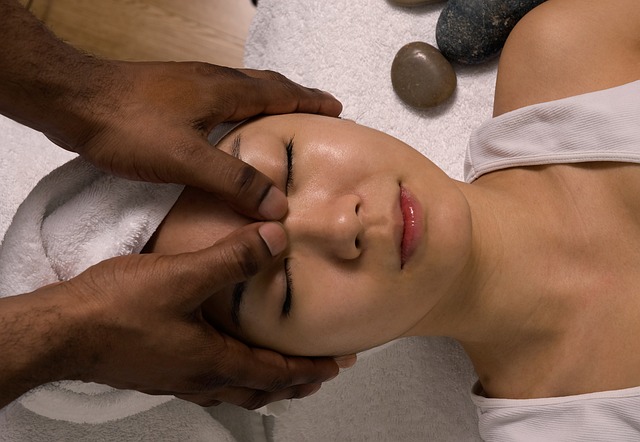Achieve Lasting Wellness: Set SMART Goals for Individual Success

Before pursuing health goals, assess your current health and lifestyle, setting wellness solutions f…….
Understanding Wellness Solutions for Individuals
Wellness solutions for individuals encompass a broad range of products, services, and programs designed to promote holistic health and well-being. These solutions address various aspects of life, including physical health, mental and emotional well-being, social connections, financial stability, intellectual engagement, and spiritual fulfillment. The core components of wellness solutions include nutritional guidance, fitness regimens, stress management techniques, mindfulness practices, and personal development strategies. Historically, the concept of holistic wellness has been around for centuries, with roots in ancient philosophies and medical practices. However, the modern approach to individual wellness solutions has been influenced by advances in technology, research in health sciences, and a growing understanding of the interconnectedness of mind, body, and spirit. These solutions are significant as they aim to improve an individual’s quality of life, prevent disease, and promote a sustainable balance between personal and professional responsibilities.
Global Impact and Trends
The global impact of wellness solutions for individuals is profound, with trends shaping its trajectory influenced by demographic shifts, technological advancements, and cultural changes. For instance, the aging population in developed countries has led to a greater emphasis on solutions that address chronic conditions and maintain independence. Meanwhile, in developing regions, there is a focus on preventive care and accessibility due to the growing recognition of health as a human right. Global trends also include an increased interest in sustainable living practices, integration of technology in health and wellness (like wearable devices and telehealth), and personalized medicine that caters to individual genetic profiles. The impact varies across regions, with different cultures adopting and adapting wellness solutions according to their unique needs and values.
Economic Considerations
From an economic standpoint, wellness solutions for individuals represent a significant market. Market dynamics indicate a shift towards more preventive care and self-directed health management, which has led to the growth of industries such as fitness, nutrition, and alternative therapies. Investment patterns show a surge in venture capital funding for startups focusing on digital health and wellness applications. These economic systems benefit from wellness solutions by reducing healthcare costs associated with treating avoidable conditions and improving overall productivity and quality of life. The economic impact is also seen in the job market, with increased demand for professionals in fitness, nutrition, mental health, and wellness coaching.
Technological Advancements
Technology has revolutionized wellness solutions for individuals, making them more accessible and personalized. Innovations like artificial intelligence (AI) and machine learning algorithms are being used to provide tailored health and wellness recommendations. Wearable technology has become a staple in monitoring physical activity, sleep patterns, and vital signs, allowing individuals to take proactive steps towards maintaining their health. Virtual reality (VR) is used for immersive therapy sessions, particularly in mental health treatment. The future potential of technology in wellness solutions includes the integration of blockchain for secure health data management and the development of advanced biotechnologies that can predict and prevent illnesses.
Policy and Regulation
The policies and regulations governing wellness solutions for individuals are complex and vary by region. In the United States, the Food and Drug Administration (FDA) regulates products and devices related to health, while the Health Insurance Portability and Accountability Act (HIPAA) ensures the privacy and security of personal health information. Internationally, regulations may focus on accessibility and affordability, with governments implementing policies to make wellness solutions more widely available to their citizens. The legislative framework influences the development and implementation of wellness solutions, dictating everything from the types of treatments offered to the marketing practices employed by providers.
Challenges and Criticisms
Despite its potential benefits, wellness solutions for individuals face several challenges and criticisms. One of the main issues is the lack of standardization and regulation, leading to questions about the efficacy and safety of certain products and services. There is also a concern that these solutions can perpetuate health disparities if access is not equitable. Additionally, the integration of technology raises privacy concerns, and there is skepticism regarding the sustainability of some wellness practices. To address these issues, stakeholders must prioritize evidence-based practices, ensure regulatory compliance, and promote digital literacy among consumers.
Case Studies
Several case studies exemplify successful applications of wellness solutions for individuals. For instance, a program in Finland that combines physical activity with cognitive training has shown promising results in enhancing brain health across different age groups. Another example is the use of digital therapeutics in treating mental health conditions, such as the app “Woebot,” which uses cognitive-behavioral therapy (CBT) techniques to support users’ emotional well-being. These case studies highlight the potential of wellness solutions to improve health outcomes and provide valuable insights into effective implementation strategies.
Future Prospects
Looking ahead, the future outlook for wellness solutions for individuals is promising. Potential growth areas include personalized nutrition, digital mental health services, and remote monitoring technologies that enable continuous healthcare. Emerging trends suggest a continued integration of technology in everyday wellness practices, with a focus on preventive care and proactive health management. Strategic considerations for the future include addressing the digital divide to ensure equitable access to these solutions and continuing to research and develop sustainable and holistic approaches to health and well-being.
Conclusion
Wellness solutions for individuals represent a dynamic and growing field that has the potential to significantly improve health outcomes and enhance quality of life. By addressing the multifaceted aspects of health, these solutions not only contribute to the prevention of disease but also support personal growth and resilience. As technology advances and regulatory frameworks evolve, wellness solutions will continue to adapt and innovate, offering new opportunities for individuals to take charge of their health and well-being.
Output Summary:

Before pursuing health goals, assess your current health and lifestyle, setting wellness solutions f…….

The text emphasizes the interconnectedness of emotions and nutrition, highlighting how dietary choic…….

To achieve lasting health outcomes, start by understanding your current fitness level through simple…….

In an inclusive fitness world, everyone should feel welcomed and empowered to move their bodies with…….

Time management is key to achieving a healthier lifestyle, with structured scheduling enabling indiv…….

Personal wellness plans, guided by SMART goal-setting, are effective tools for achieving sustainable…….

Setting achievable health goals starts with understanding your current state, lifestyle, and needs t…….

Adopting a holistic approach to health, focusing on mind, body, and spirit integration, offers power…….